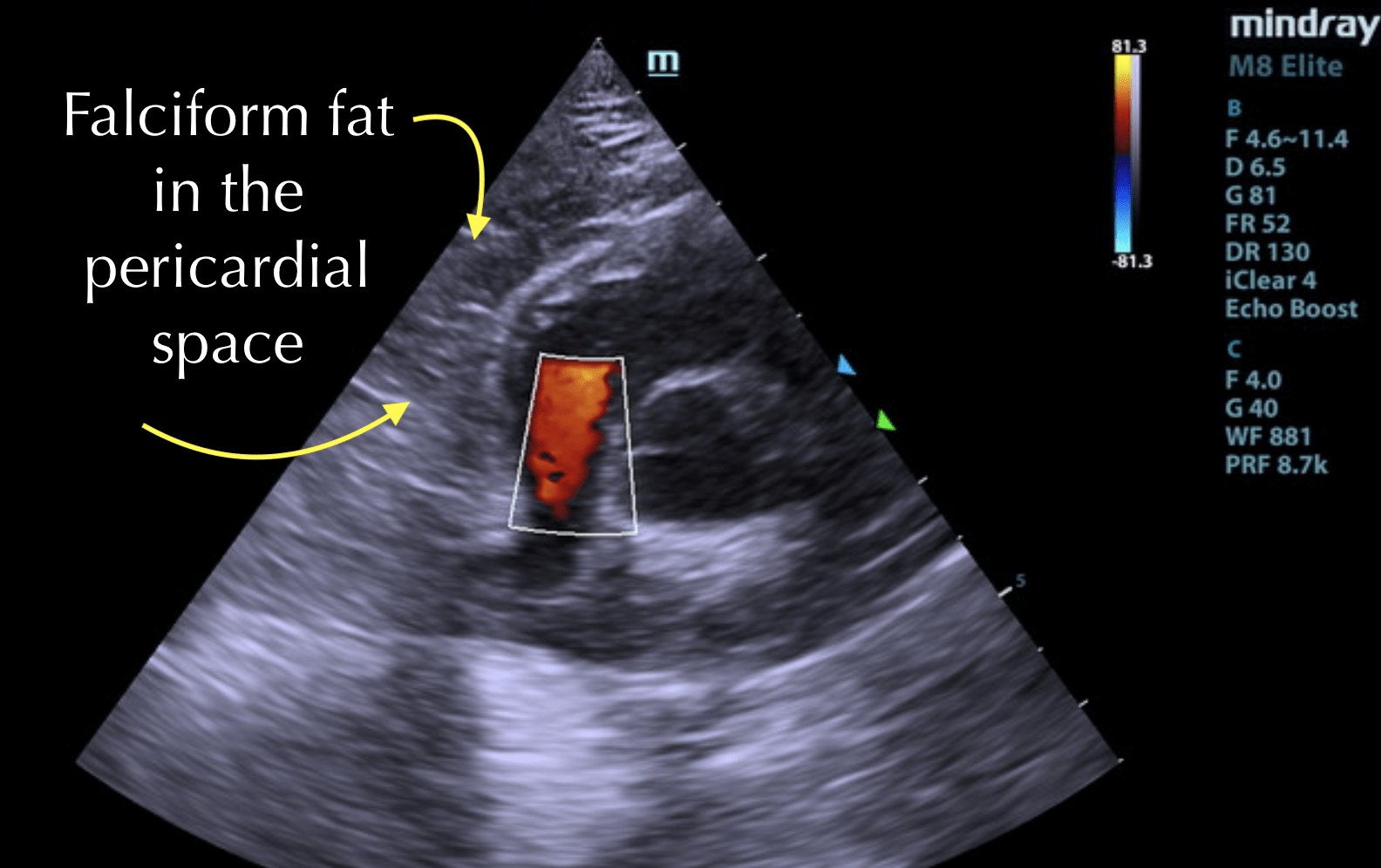The patient presented for ADR and hiding which was worsening over time. Blood chemistry, CBC, and urinalysis were both unremarkable. The caudal lumbar area of the patient was uncomfortable upon palpation. Radiographs revealed fused tail vertebrae, enlarged heart, and a mass effect in the chest. A double cavity ultrasound was performed and findings confirmed fused kidneys (which had previously been diagnosed) and a pericardial diaphragmatic hernia was noted. Falciform fat was in the pericardial space. The heart did not appear to be dysfunctional owing to this congenital defect.
The patient presented for ADR and hiding which was worsening over time. Blood chemistry, CBC, and urinalysis were both unremarkable. The caudal lumbar area of the patient was uncomfortable upon palpation. Radiographs revealed fused tail vertebrae, enlarged heart, and a mass effect in the chest. A double cavity ultrasound was performed and findings confirmed fused kidneys (which had previously been diagnosed) and a pericardial diaphragmatic hernia was noted. Falciform fat was in the pericardial space. The heart did not appear to be dysfunctional owing to this congenital defect. Due to splenic enlargement FNA of the spleen was recommended.
A few weeks later the patient’s clinical signs worsened again. Despite treatment with pain medication, cortisone and antibiotics the patient presented again with dull mentation and not wanting to walk. Upon examination no ataxia or nystagmus was noted but the patient was squinting; there was concern for CNS disease. A CT study was performed at Blairstown Animal Hospital.




